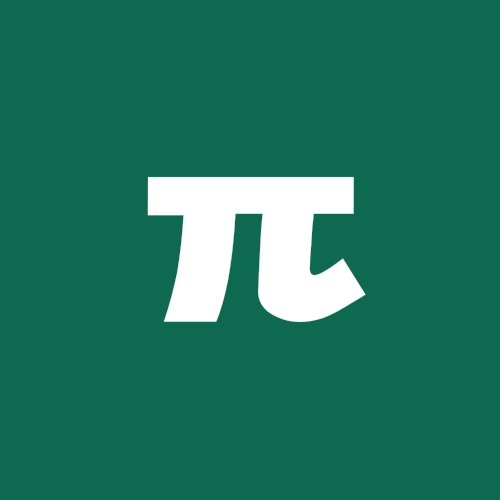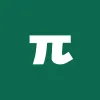The sign preservation theorem for functions states that if a real function \( f \) has a limit \( L \neq 0 \) as \( x \to x_0 \), then there exists a neighborhood of \( x_0 \) such that the function \( f(x) \) preserves the same sign as \( L \) for all values of \( x \) in that neighborhood (possibly excluding \( x_0 \)). In other words:
\[ \lim_{x\to x_0} f(x) = L > 0 \, \implies \, \exists \delta > 0 \, : \, \forall x \in (x_0 - \delta, x_0 + \delta) \setminus \{ x_0 \} \, , \, f(x) > 0 \]
Conversely, if \( L < 0 \), then:
\[ \lim_{x\to x_0} f(x) = L < 0 \, \implies \, \exists \delta > 0 \, : \, \forall x \in (x_0 - \delta, x_0 + \delta) \setminus \{ x_0 \} \, , \, f(x) < 0 \]
Let us recall the definition of a limit:
\[ \lim_{x\to x_0} f(x) = L \, \iff \, \forall \epsilon > 0 \,\, \exists \delta > 0 \, : \, \forall x \in (x_0 - \delta, x_0 + \delta) \setminus \{ x_0 \} \, , \, |f(x) - L| < \epsilon \]
In particular, choosing \( \displaystyle \epsilon = \frac{|L|}{2} \), we have
\[ L - \frac{|L|}{2} < f(x) < L + \frac{|L|}{2} \]
Now, let us observe that:
- If \( L > 0 \), then
\[ \left( L - \frac{L}{2} \right) = \frac{L}{2} < f(x) < \frac{3L}{2} = \left( L + \frac{L}{2} \right) \qquad \forall x \in (x_0 - \delta, x_0 + \delta) \setminus \{ x_0 \} \]
- If \( L = -|L| < 0 \), then
\[ \left( -|L| - \frac{|L|}{2} \right) = -\frac{3|L|}{2} < f(x) < -\frac{|L|}{2} = \left( -|L| + \frac{|L|}{2} \right) \qquad \forall x \in (x_0 - \delta, x_0 + \delta) \setminus \{ x_0 \} \]
In both cases, in a neighborhood of \( x_0 \), the values of the function \( f(x) \) have the same sign as \( L \).
Example 1. Consider \( f(x) = e^x \). We compute the limit as \( x \to 0 \):
\[ \lim_{x \to 0} e^x = e^0 = 1 \]
Taking \( \epsilon = \displaystyle \frac{1}{2} \), we have:
\[ |e^x - 1| < \frac{1}{2} \]
This implies:
\[ -\frac{1}{2} < e^x - 1 < \frac{1}{2} \]
Adding \( 1 \) to all parts:
\[ \frac{1}{2} < e^x < \frac{3}{2} \]
We conclude that in a neighborhood of \(x = 0\), the function \(e^x\) takes positive values.
Example 2. We compute the limit as \( x \to 2 \) of the logarithmic function \( f(x) = \ln(x) \). We have:
\[ \lim_{x \to 2} \ln(x) = \ln(2) \]
Now, taking \( \displaystyle \epsilon = \frac{\ln(2)}{2} \):
\[ |\ln(x) - \ln(2)| < \frac{\ln(2)}{2} \]
This implies:
\[ \displaystyle \ln(2) - \frac{\ln(2)}{2} < \ln(x) < \ln(2) + \frac{\ln(2)}{2} \]
Finally, simplifying:
\[ \frac{\ln(2)}{2} < \ln(x) < \frac{3\ln(2)}{2} \]
Therefore, in a neighborhood of \(x = 2\), the function \( \ln(x) \) takes positive values.
Example 3. Let \( f(x) = e^x - 1 \). We compute the limit as \( x \to 1 \):
\[ \lim_{x \to 1} (e^x - 1) = e - 1 \]
We take \( \displaystyle \epsilon = \frac{e - 1}{2} \):
\[ |(e^x - 1) - (e - 1)| < \frac{e - 1}{2} \]
This implies:
\[ e - 1 - \frac{e - 1}{2} < e^x - 1 < e - 1 + \frac{e - 1}{2} \]
Simplifying:
\[ \frac{e - 1}{2} < e^x - 1 < \frac{3(e - 1)}{2}. \]
Finally:
\[ 1 + \frac{e - 1}{2} < e^x < 1 + \frac{3(e - 1)}{2}. \]
Therefore, in a neighborhood of \(x = 1\), both \(e^x\) and \(f(x) = e^x - 1\) take positive values, confirming the theorem.

